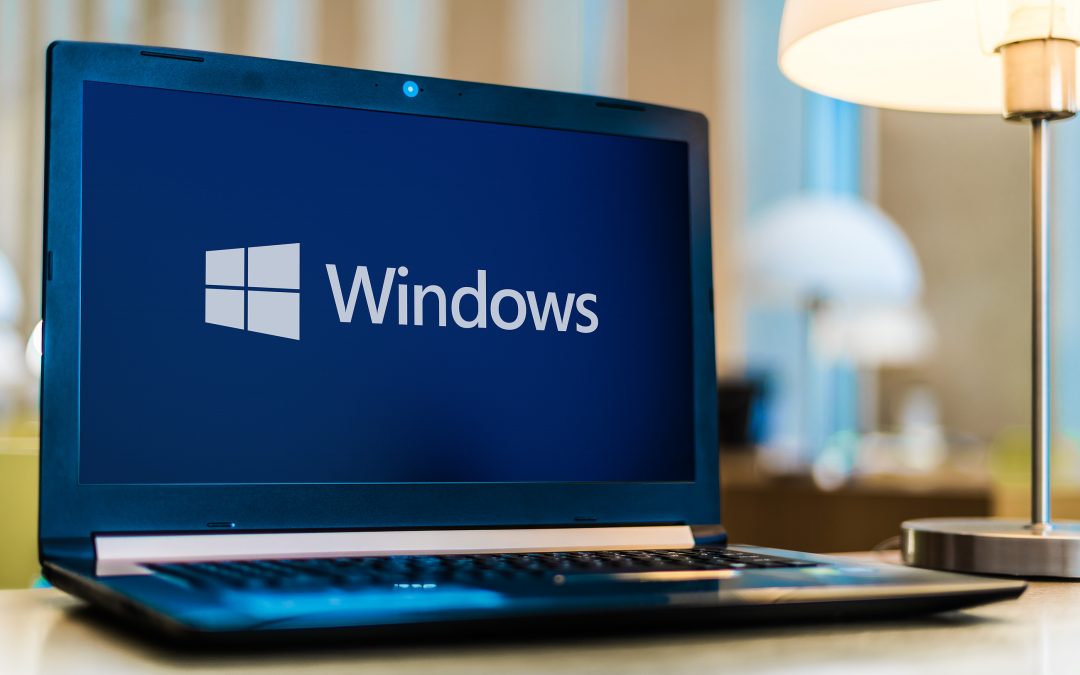It’s been over five years since Windows 10 was released, and most people agree the operating system was a big step forward in productivity and ease of use. With the lifecycle of about ten years passing the halfway point, Microsoft has just announced the next version, Windows 11.
Windows 11 isn’t meant to be a complete reimagining of the operating system, but rather an enhancement of the Windows 10 environment, with productivity and user experience in mind. The operating system that employees use is a big part of small business technology infrastructure.
If your entire team isn’t on the same OS, users can experience compatibility issues that ultimately drag down overall efficiency. So, when a new OS version comes out, it’s important for companies to fully understand what this means to their workflow and to coordinate with an IT provider to ensure all devices are being upgraded at the same time without any problems. Should you upgrade to Windows 11? Some of the reasons you may want to consider upgrading are:
- The upgrade is free for compatible systems.
- This OS upgrade is designed for better productivity.
- You won’t end up behind when it comes to software upgrades and functionality.
- For security purposes, it’s best to be on the most recent version of a software or operating system.
- This isn’t a “major” OS upgrade, so the learning curve won’t be as high for employees.
We’ll go through what you can expect with Windows 11 so you can prepare your team in advance and make your own plan for when you decide to roll out the upgrade.
What’s Coming in Windows 11 and When Is It Coming?
Streamlined & Repositioned Start Menu
The first thing users may notice is that the Start button (Windows icon) has been moved to the middle of the taskbar. The Start menu has also been redesigned to be more streamlined so people can get to what they need with fewer distractions.
Multi-Tasking Views
Fifty-six percent of surveyed employees agree that the number of apps they need to juggle makes it harder to get their work done. 68% of them estimate that just switching between app windows is taking up 30 minutes per day (that’s 2.5 hours per week.) Windows 11 will help reduce the need for app switching by providing six Snap layouts that automatically arrange 2, 3, or 4 app windows on your screen at the same time. The feature gives users a more intuitive redocking experience for app windows so they can spend less time trying to arrange things on the screen.
Easier to Use MS Teams
When Microsoft Teams was first introduced in 2017, many small businesses found it complicated to use. Since that time, Microsoft has been working to streamline Teams and make it more user-friendly. Windows 11 takes a big step in that direction. Teams is natively integrated into Windows 11 and the Teams icon will appear in the taskbar. Users can just click to chat, call, or video conference with team members, without even needing to switch into another full application window.
Personalized Widget Feed
Keeping in line with the goal to save time for users, Windows 11 includes a new Widget, which is a personalized news feed that provides instant access to important information. Users can add things like upcoming calendar items, the weather, To-Do list preview, and more. The area is powered by AI and by the Edge browser. It pulls up on your desktop, so again, there is less need to switch to another application.
More Apps & a Better Microsoft Store Experience
Microsoft is giving its store a big upgrade. It’s one of the apps that tend to be a bit slow to open and search. Windows 11 will bring a faster Microsoft Store experience and improve the visual appeal of the store. More third-party apps will be included (Zoom, Canva, etc.), which means you may be able to find more productivity tools that will work natively with your OS. Android apps are also going to be available.
When Can You Expect Windows 11?
Whenever there is going to be a major upgrade, like a new OS, you want to have plenty of time for planning a company-wide adoption. For that, you need to know the timing. According to Microsoft, the free upgrade for Windows 11 will “begin to roll out to eligible Windows 10 PCs this holiday and continuing into 2022.” Any users that happen to be part of the Windows Insider Program can expect an early build for download, in late June/early July 2021. As a first step, you want to review the system requirements to see which of your company PCs will be eligible for the free upgrade. You can review system requirements and download a free PC Health app to check compatibility on this page (scroll near the bottom to the “Get ready” section.)
Schedule Your Company Windows 11 Upgrade Now
Operating system upgrades can have issues if they’re not handled properly. Save yourself the time and trouble by scheduling Managed IT Asia to handle your upgrade for you when it rolls out. Contact us today to schedule your free consultation. Call +65 6748 8776 or reach us online.
MANAGED IT ASIA, we are an IT Support, IT Solutioning and Managed IT Service Provider specializing in serving Small Businesses across Asia. Call us at +65 6748 8776 and let us manage your Small Business IT today!
